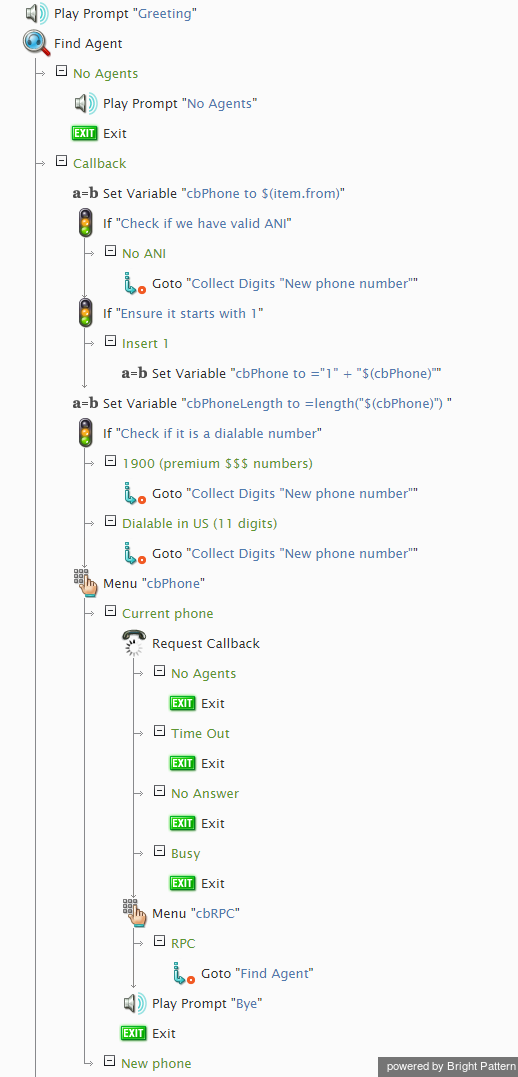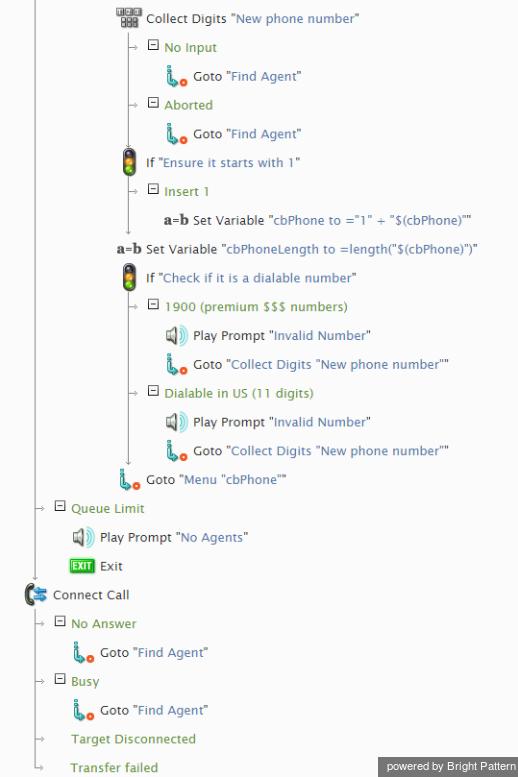From Bright Pattern Documentation
Scenario Example
The screenshot below shows a fragment of an inbound voice scenario with VQ-related logic. This scenario is based on the Virtual Queue (Callback) scenario template. You can open this template in the Scenario Builder application and review the settings of each block involved in this scenario.
The main scenario flow is briefly explained below:
- The Virtual Queue option is offered in the Find Agent block as described in section Configuration.
- Callers that prefer to wait online will remain in the Find Agent block until it is their turn to be connected. Callers that accept the Virtual Queue option exit this block via the Callback exit.
- The callback number is initially set to the value of $(item.from) which is the caller ID of the original call.
- The scenario then uses a few If blocks to ensure the caller ID is dialable and is not a 1-900 number. Note that the length() function is used to check the number of digits.
- The Menu block that follows will ask the caller to choose the callback number (either use the current phone or enter a different call back phone number).
- If the caller selects a different callback phone number, the Collect Digits block is used next to collect the new number followed by a few If blocks to ensure the entered number is dialable and is not a 1-900 number. Note that the length() function is used to check the number of digits.
- Once the callback number is identified, the call is passed to the Request Callback block. This block confirms the request, disconnects the original call, places the associated callback request in the virtual queue, waits for a matching agent, and makes the callback when an agent becomes available or EWT expires.
- The Menu block that follows announces the purpose of the call to the party that answers the callback attempt. This is done to make sure the call is connected to the right party.
- The call is then handed over to the Find Agent block for distribution to an agent. Note that if despite the EWT prediction no agents are immediately available, the call will be placed in the first position in the service queue to be picked up by the next agent who becomes available.
- As usual, the Connect Call is used to connect the call to the agent identified by the Find Agent block.


